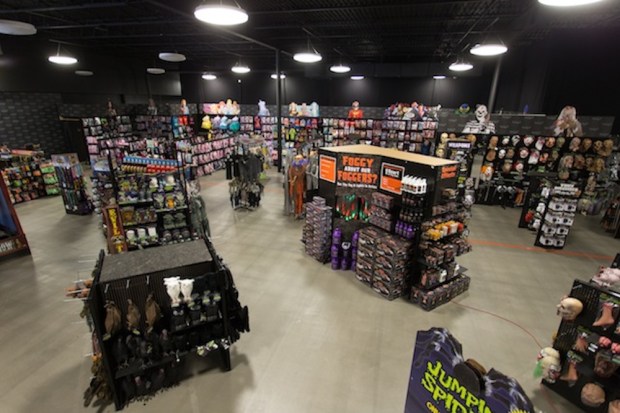How Halloween Might Have The Secret To Saving Retail

Halloween might be the scariest holiday (unless, of course, you’re a parent, in which case Christmas is the hands-down winner every year), but it’s not necessarily the most innovative from a retail point of view.
Sure, there are dedicated costume makers who bring new meaning to innovation through their use of fabric every year to celebrate the last day of October, but for most consumers, it is a holiday dedicated to buying candy for the neighborhood children, Halloween costumes for one’s own children and, for the particularly dedicated, perhaps some artificial cobwebs and other assorted spooky decorations to make one’s house look appropriately haunted.
It is consistent retail — but not necessarily out-of-the-box.
Unless, of course, it is Halloween in the hands of Spirit Halloween Founder Joe Marver, who created the Spirit Halloween business model in the 1980s.
Marver realized that consumers briefly needed a lot of very specific merchandise, and while retail’s standard brick-and-mortar players annually reserved a few shelves’ worth of space, Halloween was uniquely merchandise-heavy. One could easily fill a store with the various accoutrements of Halloween and sell it out completely in the six-week run-up to the holiday every year.
The problem? Costumes are really a one-time-of-year type of thing; outside of early fall, consumers have almost no use for a costume shop.
But in the Castro Valley Mall in 1984, Halloween revelers found a seasonal pop-up shop that fulfilled all their spooky needs in advance of the big day.
From that first location, Spirit Halloween grew to 60 pop-up locations nationwide by 1999, when it was purchased by Spencer gifts — by which point it really went into high gear, growing into the largest specialty retailer in its category, with 1,100 seasonal locations and about $8.4 billion in annual revenue.
Not bad for a primarily brick-and-mortar shop in the business of selling decorations and costumes and various shades of grease paint. Spirit Halloween may have done a bit more than find the innovation Halloween retail needed.
In fact, Joe Marver may have stumbled on the solution the retail industry needed, about 25 years before the rest of retail realized it.
The main magic of Spirit Halloween is that, like its namesake, by early November it disappears. It keeps an online shop open year round — costume parties still happen, after all — but for the physical shopping experience, consumers only has a small window every October. And, one employee told us, it’s a window customers certainly embrace.
“People try on the stuff right here, like in the aisles. It makes sense — it’s a Halloween costume — you need to know it doesn’t make you look fat before you buy it, because no one is going to send it back.”
The logic of capturing customer interest and creating a commerce opportunity out of a unique mindset on the part of the customer is becoming far less associated with a niche like seasonal retail, and from a far wider variety of players.
Some of which seems fairly straightforward: Kanye West is playing in New York City, so he opens the Kanye Pop-Up to give fans a chance to “pre-game” the big show with some celebratory retail. Going to see Kanye is fun, after all, but going to see Kanye in your own $400 Kanye-brand white t-shirt? It’s hard to imagine improving on that experience.
Brands like Ikea, which have a large network of popular international stores to call their own already, are also going in hard on pop-up shops. In Paris, they build “sleepover” bedrooms in subway stations. In London they opened bed and breakfast cafes. More than an opportunity to showcase their goods, the pop-ups give customers a chance to experience them first hand and in context.
While the pop-up shop likely can’t work for every retailer, it is a method that can work for retail. Spirit Halloween, after all, specialized in inhabiting unused retail spaces, and as more of those are proliferating in empty malls, it seems becoming temporary residents who’re able to form a strong — if only short-term — relationship with consumers might get those consumers to do something they otherwise are becoming increasingly unlikely to do.
Leave the house and do some shopping.
